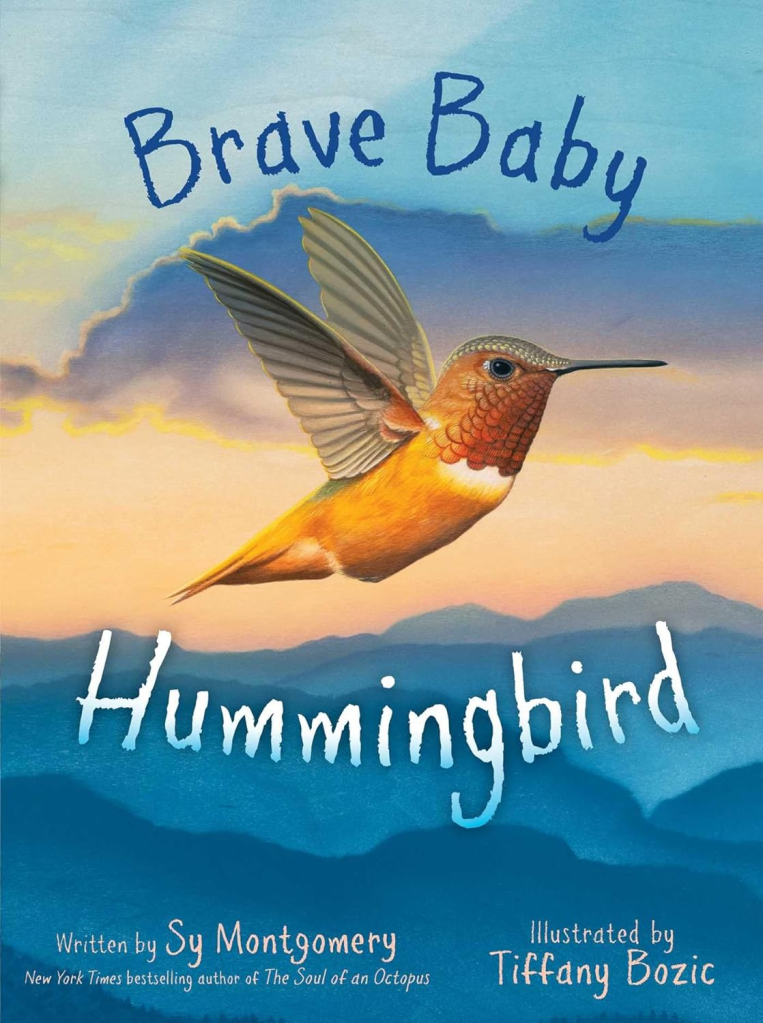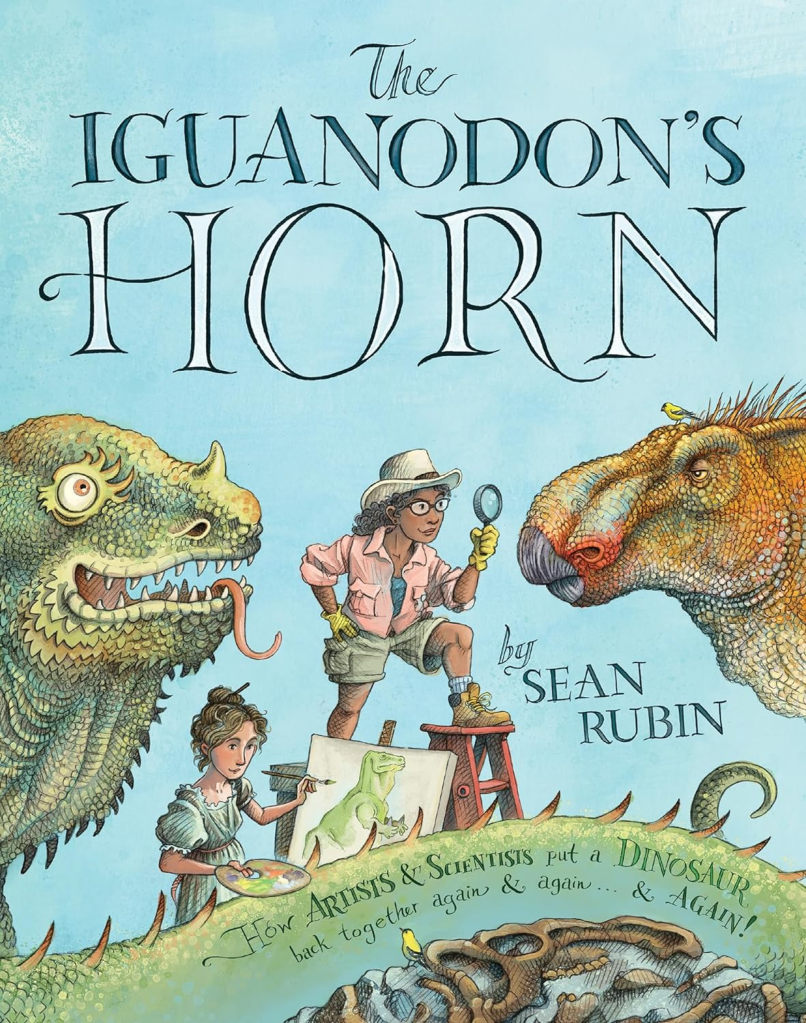
Brave Baby Hummingbird by Sy Montgomery, illustrated by Tiffany Bozic (Simon and Schuster, 48 pages, ages 4-8). A hummingbird tells his story, beginning with his birth when he and his sister hatch from eggs the size of navy beans. They’re fed every twenty minutes until the day their mother doesn’t return to the nest. Fortunately, they’re rescued and taken to a place where a human, known only as the Voice, takes care of them until they are old enough to survive on their own. Woven into the story are facts about hummingbirds’ food, flight, bodies, and migrations, and more information is given at the end, including the author’s experience with a hummingbird rescue and ways that readers can help these birds. This lovely book provides plenty of information about hummingbirds, illuminated with beautiful illustrations of the birds at every stage of their lives and the colorful landscapes they inhabit.

The Iguanadon’s Horn: How Artists and Scientists Put a Dinosaur Back Together Again and Again…and Again! by Sean Rubin (Clarion Books, 48 pages, grades K-4). Ever since humans first realized that dinosaurs once existed, they’ve been trying to imagine what these creatures looked like. Using the dinosaurs’ fossilized remains, artists have painted and sculpted prehistoric depictions…and generally gotten things completely wrong. A case in point is the iguanodon’s horn, which turned out to be (we think) a thumb spike. Sean Rubin goes through the evolution of ideas about the iguanodon, showing how increased scientific knowledge changed perceptions about what the animal looks like. He speculates on what the next ideas may be, emphasizing the fact that, barring time travel, we will never know for sure. The endnotes give additional information about each two-page spread.
Dinosaur fanatics will love this book, both the fascinating story of how science works and the illustrations, which are at once informative and funny (I liked the cartoon bubbles showing the comments of the various wrong iguanodon models: “I DO look pretty terrible here,” “Seriously. This is embarrassing.” I felt a little bogged down reading the repeated wrong guesses, but I suspect a true paleo fan will find them captivating.
